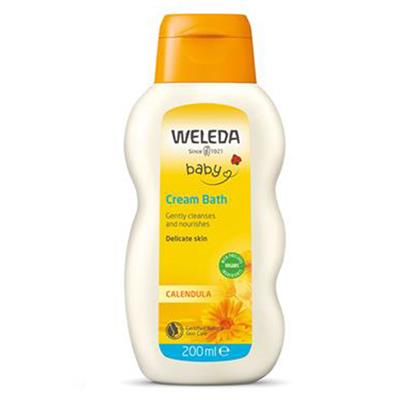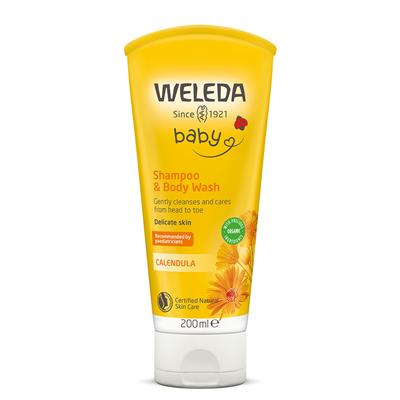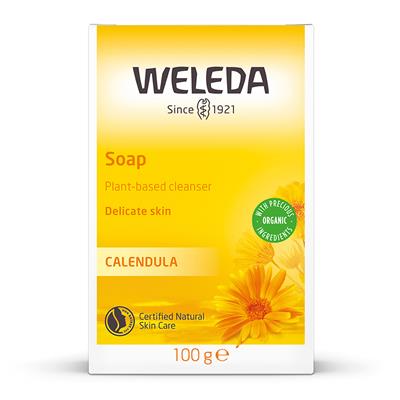
Bathtime bonding for babies and parents
Bathtime bonding for babies and parents
How to make a relaxing bathtime routine
A bath is possible at any time of day and almost always beneficial. It can become a relaxing ritual for babies and toddlers alike. Bathtime is an occasion for the whole family – parents and baby – to step outside of humdrum day-to-day life and enjoy tender moments together without distraction. Baby bathtime is family time. Being in the water together is an opportunity for bonding, activating the senses, gentle touch and experiencing the joy of movement in the water. But not every baby is a fan of water.
The ‘fourth trimester’ postnatal period immediately following birth is all about bonding with your newborn. Close skin contact and a magical mix of hormones ensure that a bond develops between parents and child. In the first hour after birth, a newborn is particularly alert and soon begins to look for her mother’s breast. Bathing your newborn too soon after birth interrupts the skin contact between mother and child, which can adversely affect the budding breastfeeding relationship. It is therefore not recommended that newborns are bathed immediately after birth. It’s enough for newborns to be carefully dried and kept warm, maintaining direct skin contact with the mother or father. This helps your baby’s skin to adjust gently to the world outside the womb.
Should I wash the vernix off my baby’s skin?
The vernix, a wonderfully nourishing and protective layer that may still completely or partially cover your newborn baby’s skin, does not need to be cleaned off. Vernix is gradually absorbed by the skin, and during those first few days of life it supplies the baby’s delicate skin with lipids and moisture, ensuring that it maintains a balanced pH level.
Dry vernix residue in the folds of the skin can be gently removed with oil after a few days to avoid irritation in those areas. After this point it’s fine to start bathing your baby. There is no need to wait for the stump of the umbilical cord to fall off. Just be sure to carefully pat dry the navel area after the bath.
When is the best time of day to bathe my baby?
Some babies are stimulated by a bath and become active, making it harder for them to sleep afterwards. In that case, it makes sense to move bathtime to the morning hours or after a nap. Parents will figure out on their own when the most suitable time is to bathe their baby during the first weeks and months after birth – over time, you’ll get to know your child better and learn what works best and when. It can be helpful to feed your baby before bathing – hungry babies are rarely relaxed. By being picked up and handled during the bath, amidst all the excitement and activity, can make your baby regurgitate and bring up some milk; don’t worry, no harm done!
Since bathing takes a lot of energy, some babies may want to feed again shortly after their bath.
How often should I bathe my baby?
Babies who enjoy taking a bath can be bathed regularly, but it is also fine for them to go a few days without a bath, just topping-and-tailing to keep clean and fresh. Babies that don’t seem to enjoy the water don’t need to be forced. If that’s the case with your baby, just try again from time to time. Generally, by the time babies can sit up on their own, they also enjoy the water.
Babies who enjoy bathtime can stay in the water for 3 to 10 minutes; older children can stay in longer, as they don’t cool down as quickly. The bathroom should be warm and cosy (at least 24 degrees Celsius). The initial temperature of the bath water should
be 37°C – this can be measured using a bath thermometer, widely available from most pharmacies.

Tip for testing water temperature
The sensitive skin on your elbow can also be used to check the bath water temperature. Simply dip your elbow deep into the water. If the water temperature feels pleasant and not too hot or cold, it will also be pleasant for your baby. Because our hands and fingers are already accustomed to higher temperatures, they are not suitable for checking the bath water temperature.
Natural Bath for Baby
It’s important to use a bath product that has been specially developed for sensitive baby skin. A specially formulated baby bath gently cleans the skin of nappy cream residue or any grubbiness left over from a dirty nappy. It is not advisable to use bubble baths as these contain foaming detergents that can dry the skin. It’s best to use a mild bath product such as Calendula Cream Bath, which contains moisturising plant oils (such as almond oil) and skin-soothing active ingredients (such as calendula and chamomile). For babies with very dry skin, a small amount of Calendula Baby Oil can be added to the bath water. Bear in mind this may take some practice because the oil in the bath coats the skin, making it somewhat slippery. For restless or over-excited children, Weleda Calendula Bath is ideal. The organic thyme extract helps to warm baby’s body and a warm bath restores balance.
Should I use a baby bathtub?
Practical baby bathtubs made of light plastic with a plug for drainage are widely available; it’s also easy to bathe your newborn in a clean sink, just be careful to avoid the taps. It’s not necessary to use bath cushions and seats or floating rings. Not only do they prevent skin-to-skin contact between parent and baby, their use might make it tempting to leave the baby unattended, even if only for a moment. The element of water feels strange to many infants, who are not accustomed to the sense of buoyancy and almost boundless freedom of movement. To be gently guided and lovingly supported in the bath by a caregiver gives babies a feeling of security while they learn to enjoy this new element. Sharing the precious moment of bathtime together can strengthen the bond between parents and child.

After bathing
After a bath, babies and toddlers should be wrapped and thoroughly dried, gently but quickly, preferably with a soft, fluffy pre-warmed terry towel. If there is no heater nearby, the towel can be pre-warmed on the parent’s own body.
Calendula Baby Oil nurtures and protects your baby’s sensitive skin and can be applied during a soothing massage. Afterwards, Calendula Nappy Change Cream can be applied to the nappy area.
Does your baby cry after her bath? There are many possible reasons why: was she startled by the abrupt end to the pleasant feeling of weightlessness, or the sudden change of temperature when emerging from the warm bath water into to the cooler room air? Perhaps he was just enjoying relaxing, and felt interrupted when dried and dressed. Or maybe bathtime made him feel hungry? Taking a bath is exciting and even exhausting, and as a result your baby might need feeding, warmth, cuddles and a feeling of security. Feeding your baby, giving her plenty of skin contact, and warming her with your body and a towel or blanket are ways to calm and satisfy these needs. After a little skin pampering, it’s time to get dressed – preferably in clothes that do not smell too strongly of detergent.
Swimming in winter and summer
When it’s cold outside, a baby should not be immediately exposed to the winter air immediately after a bath. A child’s body and hair should be completely dry before going outdoors in cold weather, to prevent loss of body heat. A hat will help protect against too much heat loss, and will help keep your baby warm and cosy.
Even if adults feel warm or hot outside, a baby can easily get chilly, especially when their skin is wet and a mild breeze is blowing, which can rapidly reduce a baby’s body temperature. So caution is advised when bathing outdoors.
A visit to an open-air pool in summer is more suitable for older babies who can already sit up independently in the bathtub. When visiting an outdoor swimming pool with your little ones, ensure that they do not become too cold, and protect their wet head
and body from the wind. Take sensible precautions to always protect your baby’s skin from the direct sunlight if splashing around outdoors enjoying the summer sunshine, under your watchful eye.




